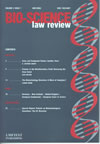“• National courts will invalidate SPCs to combination products that have been granted on the basis of the ‘infringement test’ but where the active ingredient(s) are not specified in the wording of the claims of the basic patent.
• More SPC applications will be filed in which the product is defined as one or more (but not all) of the active ingredients present in the authorised medicinal product.
• Subject to confirmation in Case C-442/11 of the Court of Justice’s comments on point (C) above, national courts will enforce SPCs to single active ingredients against the manufacturers of generic versions of combination products containing a protected active.
• Generic manufacturers will delay launch of combination products until SPCs to the individual actives have expired (or have been invalidated).
Further, although it is a point of view that may not be shared by all practitioners, the authors believe that the decisions may not lead to any changes in established practices with regard to the numbers of SPCs granted for basic patents that protect more than one product.”In relation to the latter issue, the article points to the similarity in wording between the Biogen decision and the Medeva and Georgetown et al. decisions in respect of comments on the number of SPCs that may be granted for each basic patent, and questions whether any change to the status quo was really intended by the Court of Justice on this issue.
The article also discusses possible longer term implications of the decisions, and suggests that further judicial interpretation will be required in order to clarify what is meant by “specified (or identified) in the wording of the claims” - particularly in connection with patent applications that can be argued to “specify” both a novel active ingredient (A) and the combination of that active with another, specific active ingredient (i.e. A+B).
Mike, John and Michael conclude the article by saying:
“Putting aside the issues where there is a need for further clarification, the Medeva and Georgetown et al. decisions should be welcomed by the pharmaceutical and agrochemical industries as representing a carefully balanced approach that rewards genuine innovation with an appropriate degree of protection.”The points mentioned above are all explained in more detail in the article.


No comments:
Post a Comment